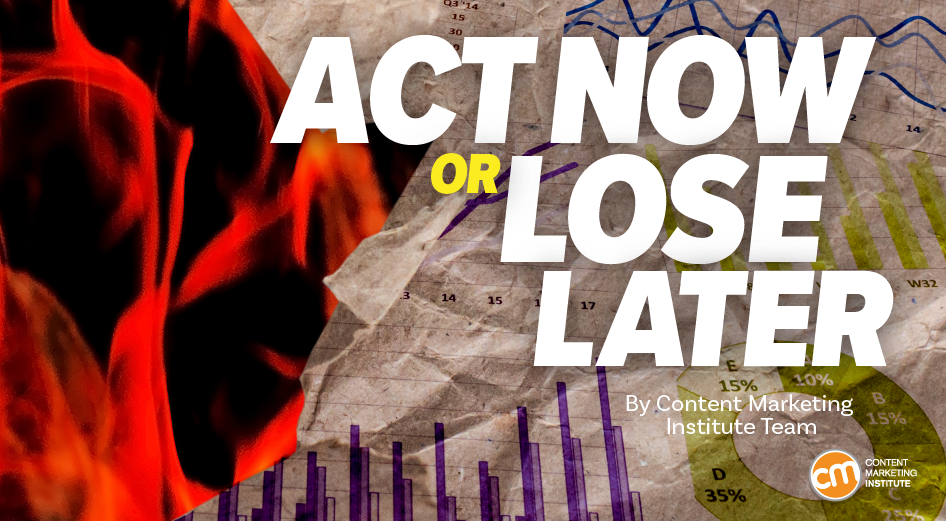Everybody knows the apocalypse of ad tech data approaches.
Yet, most aren’t rushing to do anything about it.
That’s the latest finding in the Internet Advertising Bureau’s 2024 State of Data Report: How the Digital Ad Industry is Adapting to the Privacy-By-Design Ecosystem (subscription required).
IAB finds that 94% of survey participants say they expect Google Chrome to eventually eliminate third-party cookies. Yet only 42% believe Google will do as it said and end them by the end of the year.
It’s like that scene from the movie Don’t Look Up. Dr. Randall Mindy (Leonardo DiCaprio) and Kate Dibiasky (Jennifer Lawrence) try to convince the president of the United States (Meryl Streep) that there’s a 100% chance a comet will hit Earth. “Well, it’s 99.78%, to be exact,” Randall says. The president replies, “Let’s call it 70%, and let’s move on … You know … let’s just sit tight and assess.”
What should you do? Will this comet created by third-party cookie’s ending, pending privacy legislation, and an inability to get first-party data crash the world of digital ad tech? We asked CMI’s chief strategy advisor Robert Rose. Watch or read on for his take.
Marketers listen but don’t act on third-party data talk
Every few weeks, you’re served up a reminder about privacy and data. Some go underreported, like the new legislation in New Jersey and New Hampshire, and a proposed law in Maine may be the most stringent in the country. Google offers ongoing new updates about its removal of third-party cookies in its Chrome browser, and even Microsoft is cracking down with the Edge, its browser that nobody uses.
Yet, as the IAB reports, marketers and others know all that’s happening, yet less than half think it will happen this year.
If you haven’t been eager to jump into and try out the Google Privacy Sandbox initiative, you’re not alone. Eighty percent of marketers know about it, but less than 60% are using or planning to use it this year, according to the IAB study.
What gives? Why don’t brands, agencies, and publishers do more now to address the inevitable day when they can’t track advertising and other content across websites and platforms like they used to?
The IAB report suggests a few things, though it doesn’t spell them out.
Missing the point in data collection and analytics
First, marketers still assume first-party data applies only to contact information, devices used, and transactions. The IAB survey found that consumer interests and preferences ranked last in the first-party data collected this year. Yet, interests and preferences are the most important things you need to know. As I’ve said, give me the choice to collect an email address or know the visitor’s intent and desire, and I’ll choose intent and desire every single time.
Second, the IAB research also illustrates the lack of measurement capabilities. It finds that 76% of brands and agencies are now investing in or planning to invest in new forms of multi-touch attribution systems because of privacy legislation and what they call “signal loss.” Given that they’re just starting or planning to invest, these brands don’t have the measuring tools to understand now.
First-party audience data helps you understand the impact — the effect your content, marketing, and customer experiences have on audiences. However, Google Analytics, marketing automation, and other analytics tools measure consumption. You can tell in fantastic detail which content is consumed and how much. But you can’t say which, if any, attributed or impacted the customer to do the next thing your brand wants them to do.
According to the research, marketers are now revisiting their tech stacks to look at this evolution. Yet, the top four platforms they mentioned are website analytics tools. That’s scary. I’m a fan of customer data platforms (CDPs), but they seem to be the sexiest data tool no one is deploying.
Companies seem to be grasping anything to help them evolve that won’t require them to upend their existing content and marketing operations.
Committing to a difficult but vital challenge
The IAB report says that the majority of companies train staff on data privacy, dedicate teams to business transformation, and tap external expertise. That’s a positive sign. The key to success, though, requires an urgency in that work.
It’s a big lift. Connecting your owned media properties — the website to your newsletters to the blog to your physical and digital events — into a single first-party data-rich source of insight into preferences, intent, impact, and success is NOT for the faint of heart. It takes time. It takes persistence and a whole lot of patience.
But I can tell you this: If you get it right, it’s worth every bit of the sweat and equity you put into it.
It is like that comet in the movie Don’t Look Up. More inefficiency, loss of data signals, and increased complexity to reach individuals in different countries or states are coming. It’s not a “maybe-it’s” coming. It’s an “it’s-already-here” coming.
Marketing and content teams must prioritize getting good at first-party data in the coming months and quarters.
It’s nice — and refreshing — to see the IAB reinforce this, writing, “(P)rivacy by design is vital — not just for compliance but as a strategic imperative to do what is in consumers’ best interests and to reinforce our responsibility as industry leaders.”
I couldn’t agree more. It’s also just good marketing.
HANDPICKED RELATED CONTENT:
- Don’t Wait To See How Cookies Crumble; Cook Up a New Data Strategy Now
- What Marketers Should Do as Google Crumbles Third-Party Cookies
- Google Did a Cookie-Free Experiment. Should the Results Matter to You?
Cover image by Joseph Kalinowski/Content Marketing Institute

